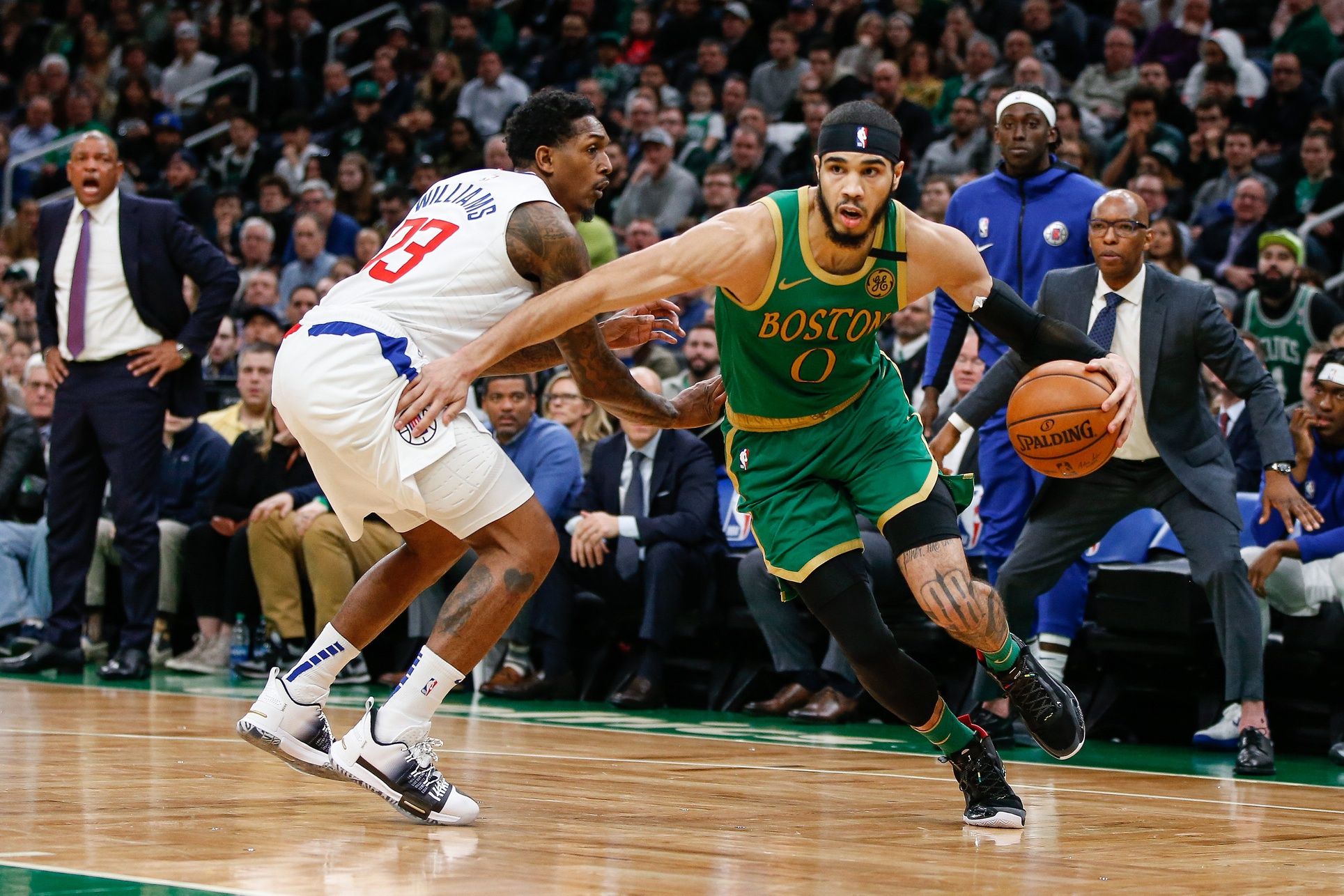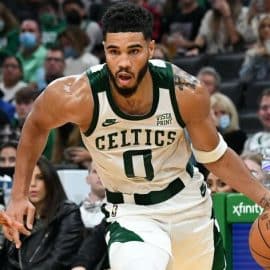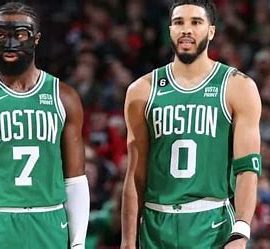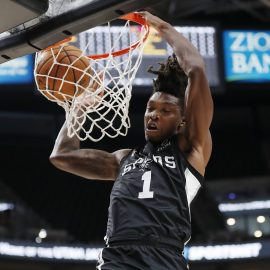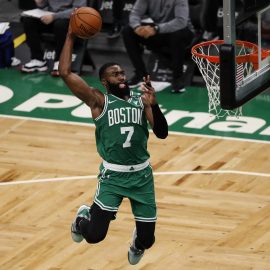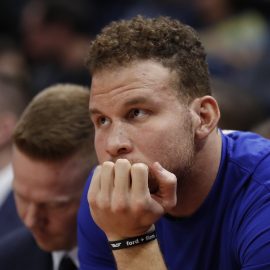Every morning, we compile the links of the day and dump them here… highlighting the big storyline. Because there’s nothing quite as satisfying as a good morning dump.
“We should be a hard team to blitz,” said Brad Stevens. “It’s all gonna be about when we’re being blitzed, the recognition of the person with the ball and the spacing around the ball of the people around the ball. If both of those things are good, we should really be a hard team to blitz.
“We have bigs who can finish above the rim on lobs when they get out of there, they can all pass from the middle of the court, and the guards can all play,” he said. “And when it’s playing four-on-three out of a blitz, our guards should all be able to take advantage of that. But we have to be ready. The person being blitzed has to be ready and the people around them have to be spaced well.”
The modern NBA game is all about gravity. You start off with a guy who draws players away from their official assignments in order to create mismatches around the court, with the best available mismatch hopefully leading to two or three points.
In its simplest form, the NBA’s pick-and-roll offense relies on a very specific sequence of action: First the pick–a post player comes up toward the top of the key and separates the ballhandler from his defender. Hopefully, the defense will switch, leaving two mismatches: The post player is now (usually) being defended by a wing or a guard, giving a height advantage that can be used under the rim, and the ballhandler, usually a wing, is now being defended by a larger and probably less nimble big (if the defense doesn’t switch, the ballhandler has been given some space to work with and can drive or pass around the perimeter).
If the ballhandler keeps the ball and drives the basket (the roll), getting past the big, the goal is drawing a help defender off a perimeter player (or another post player). If the ballhandler is quick enough, he can take the layup or dunk, but if the help defender reaches him in time, his job is to spot the man left open before the defense can rotate to cover him. This guy is usually hanging around the three point line on the weak side (that is, the side opposite the ball handler).
But the whole idea is gravity: You have a man defense at the beginning of an offensive set, and your goal is to create a sort of black hole around the ballhandler that draws players away from their designated assignments.
Practically every team has a player that is good enough to collapse a defense, so collapsing the defense isn’t the key to winning in the NBA. In fact, the better defenses (like Boston’s) are predicated on knowing how to collapse. That is, every player knows where they need to move to when the defense collapses. With a first-rate NBA defense, everybody starts moving when the PNR ballhandler drives the lane, with the goal being that the player left open is in the ballhandler’s blind spot (that is, behind the ballhandler or screened by the ballhandler’s defender).
The strategy comes after the defense collapses, and this is where the Celtics are constructed–and coached–in a way that gives them serious advantages.
First, the Celtics run a motion offense. That is, in itself, an incredibly vague term, but what it means in practical terms is that multiple players will start moving when the PNR man moves. Rather than having two or three guys camped out on the weak side perimeter waiting for a catch and shoot opportunity, these individuals will start moving, cutting baseline, for instance, or rotating over to the top of the key so that they can drive if the ball is passed to them.
And now we get to the delightful fun that is the Celtics offense when things are clicking.
The C’s have multiple players that can drive. As a general rule, PNRs can be defended in a consistent manner from team to team because the ballhandler is most often the other team’s PG (LeBron and Giannis are dominant in no small part because they are big guys who can play like PGs). The Celtics, however, can send Tatum, Brown, Hayward and Walker to the basket on a PNR (and 6th man Smart).
And when the ballhandler gets blitzed, as Stevens points out, he has a lot of options.
Because so many players on the Celtics can drive, the C’s offense can create havoc simply by doing a drive and kick followed by another drive. Few defenders are prepared for a scenario like this, and some of the best mismatches the C’s draw come off situations where the C’s have started two drives to the basket and have turned the defense into a shapeless blob that has left multiple players open (actually, this is one of my favorite things to see done well, because when it’s done exceptionally well, it fools the defense into thinking that they’ve broken up the set, thus putting them off-guard for a moment)
But, as Stevens points out, lobs are another area where the C’s can be dangerous. Shots at the rim are still the most desirable ones in basketball. They are sufficiently high percentage to be worth more than three point shots. Now, if a PNR defender (either the switched big or a help defender) has cut off the direct path to the basket, he’s also, probably, cut off any good angles to pass the ball into the low post. But, if you’ve got a player–or players–who can take lobs, that’s an option that’s still open to the PNR ballhandler.
Hayward’s playmaking role will continue to benefit all concerned.
“I think that when he uses a pick and roll, when he uses an action, he’s going to make the play that opens itself up,” said Stevens. “So if they over-help he’s going to pass the ball. If he has an opportunity to score he’s going to score. If it’s just as simple as it’s guarded well and he just reverses it and moves onto the next action he’s gonna do that.
“He’s always been a guy that has just kind of made his — he’s as good as there is at making the right play,”
Whenever I hear debates about players in the past not being ‘good enough’ to play today, I think about how much of this game is mental. Last year’s C’s team was not in a good place mentally.
Nothing torpedoes a good offensive scheme quite like a guy who won’t make the right basketball move, and failure to recognize–or failure to perform–the best move is mental, not athletic. It’s a guy who has the ball and doesn’t want to give it up in the face of good defense–because he’s thinking about his stats over the team’s, or because he doesn’t have confidence in his teammates.
For the C’s, it’s to their benefit that they have three players, Hayward, Walker and Smart, who can be trusted to make the right move almost all the time–not only because they can set up Tatum and Brown but because they’re teaching Tatum and Brown the right way to play the game.
Page 2: Where kind of real basketball is back, sort of
The Boston Celtics take on the Oklahoma City Thunder in a scrimmage on Friday evening, their first televised basketball game since the coronavirus pandemic shut down play on March 11.
…
On Thursday, Walker told reporters he will not play Friday as the Celtics continue to monitor his sore left knee.
“I ain’t playing tomorrow, but I would,” Walker said, sounding wistful. “I’m good, man. I feel really good, actually. Really fun to get out there with my teammates. Yeah, the knee feels good. I’m trending upwards. After what I do each day the knee feels well. I’m in a good place right now.”
The basketball tonight, I’m going to guess, will be painful to watch at times. And, I’m guessing the same can be said for the broadcasting.
The Denver Nuggets’ broadcast…tried a Twitch-esque set up with the four broadcasters in little boxes at the top of the screen. Those boxes came and went throughout the game, as personal Internet connections tend to do. At one point, the sound clearly went out for the broadcasters, which left three talking heads staring at each other silently at the top of the screen
Really?
I mean, I get that it costs a fortune just to pay for the broadcast rights for these games, but it seems like these networks could at least invest a little bit of time and money getting these guys’ homes setup for reliable streaming.
The rest of the links
MassLive: Celtics vs. Thunder scrimmage: Livestream, start time, TV Channel, how to watch NBA season restart (Fri. July 24) | Gordon Hayward’s takeover ability, foot pain, and absence: 3 big questions as the Boston Celtics restart their season
NBC Sports: Forsberg: For Walker, playoff wins more important than points | Forsberg: Can Theis respond on the big stage come playoff time?
Boston Herald: Kemba Walker buys into his slow recovery program
Add The Sports Daily to your Google News Feed!
